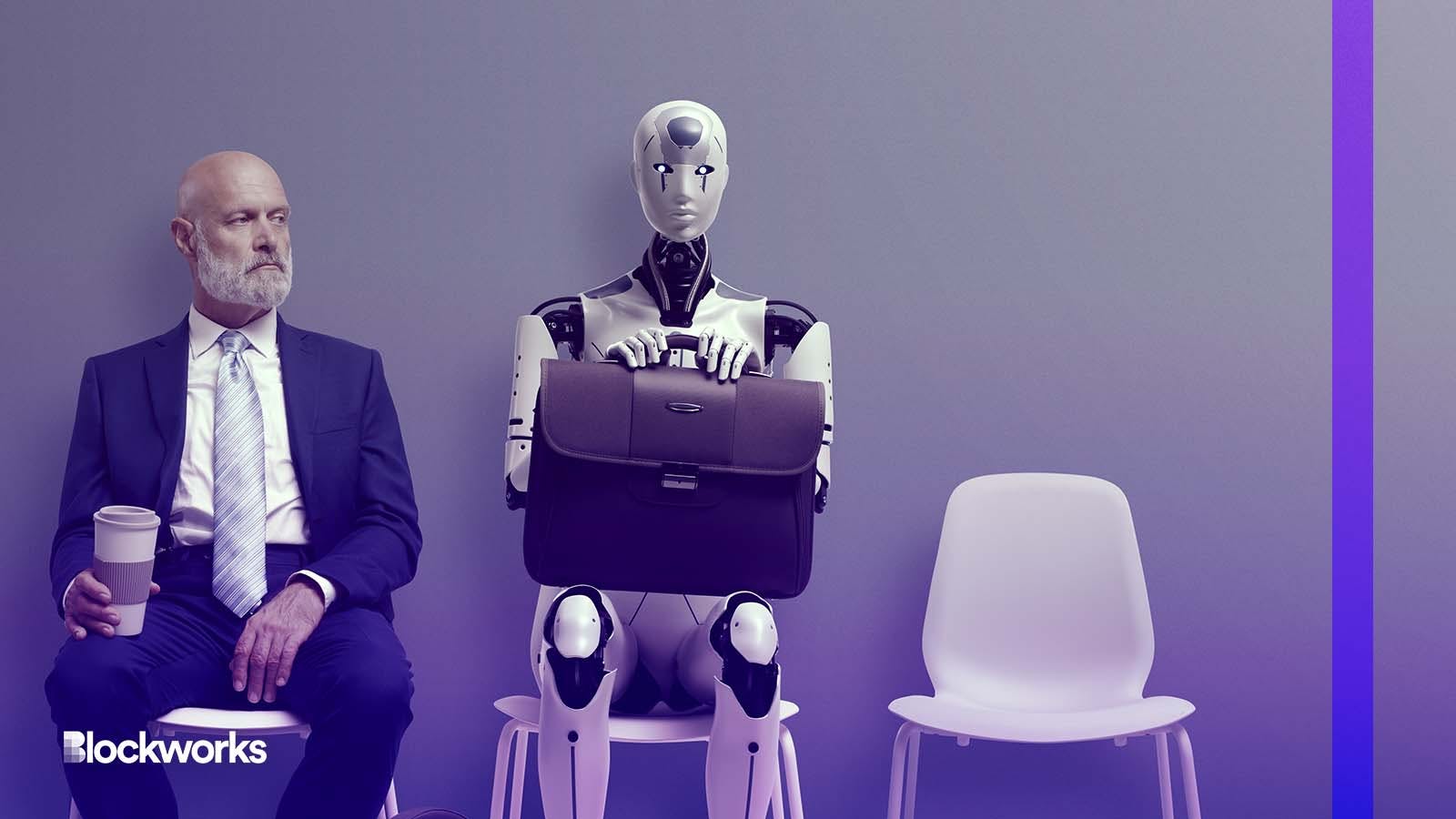AI has a copyright problem — and I know how to solve it
Blockchain is the answer that both assuages content creators’ fears and avoids lawsuits as large language models develop at breakneck speed

Stokkete/Shutterstock modified by Blockworks
Remember LimeWire in the late ‘90s and early ‘00s?
At first, musicians and studios were not compensated for use of copyrighted material. The whole file sharing phenomenon completely disrupted the music and entertainment industry. But over time, the industry adapted to protect intellectual property by finding a way to compensate creators.
Generative artificial intelligence, or AI, is in a similar predicament.
The new tech has captured the world’s imagination by rapidly creating novel images, text, music and more with minimal effort. It’s starting to allow writers, artists and other content creators to quickly develop new material without having to manually create each element. The impact is game-changing.
But generative AI has a copyright problem.
The technology relies heavily on large language models (LLMs), which hoover up large swaths of data from every corner of the internet. It uses this data to generate responses to user prompts.
This process poses an intellectual property risk because much of this data may be copyrighted or otherwise protected by law. Worse, the creators of the original content are rarely paid when LLMs scrape their work.
Major lawsuits have already been filed over LLM copyright infringement. Similar cases concerning generative AI’s legal ramifications are already headed to courtrooms, and the problem will no doubt proliferate as generative AI’s usage grows. On the other side of the issue, creators are already worried about their jobs disappearing.
The challenge: How to ensure intellectual property rights are respected when using generative AI built from LLMs?
For generative AI to be used responsibly and ethically, a system must be used to identify the provenance of copyrighted data collected by LLMs so that appropriate steps can be taken — either for proper compensation or to avoid lawsuits.
Blockchain could very well be that solution.
Blockchain’s power to address the problem
As a distributed ledger technology, blockchain allows users to store and track digital transactions securely on a decentralized network without any centralized control or authority.
Blockchain also provides an immutable record of transactions, meaning all information about who created what and when can be stored on the digital ledger. If the data troves that LLMs scrape are put on-chain, synergistic relationships between generative AI and blockchain could emerge.
For generative AI, this could provide full transparency into how LLMs use copyrighted material.
Blockchain networks can be programmed so that each use (transaction) requires a payment — allowing creators to automatically receive payments whenever their content is used by LLMs. By leveraging blockchain in this way, companies building LLMs might be able to avoid costly lawsuits while still innovating and building models that can tap into generative AI’s potential.
Protecting intellectual property with blockchain
Like any novel idea about how to solve an industry-level problem, some basic questions need answering. We’ll need to figure out exactly how blockchain can best be applied in this context. We’ll need to decide on an efficient payment system.
While these are not small challenges, blockchain builders have faced similar questions addressing equally big problems in the recent past — and they’ve solved many. Past examples include on-chain exchanges, how to apply blockchain to insurance, and digital image ownership.
Somewhat ironically, I have also posited AI might also be part of the solution, as natural language processing could make complicated, blockchain-specific coding challenges drastically simpler and more secure.
The bigger challenge will center more on how other industries evolve to keep pace with fast-changing technologies.
When Napster and company disrupted the entertainment industry, the space adapted. We saw the rise of streaming businesses such as Pandora, Spotify and Apple Music, which, in many ways, has created new and improved ways to consume music and video content.
Read more from our opinion section: Here’s how to not feel guilty about using AI to make yourself into a handsome pirate
Blockchain and generative AI are moving at an even more rapid pace, and in their wake, industries must adapt more quickly. But in my view, a marriage of blockchain and AI will create a better outcome for businesses and society at large in the end.
Over the next year, I predict we’ll see significant progress in addressing generative AI’s intellectual property issue, with blockchain emerging as the most efficient and effective solution. And in turn, we’ll see the commercial and regulatory challenges work themselves out.
All are critical steps for generative AI to continue to grow as a category — and to open up a new world of possibilities for LLMs, their many users, and content creators alike.
Get the news in your inbox. Explore Blockworks newsletters:
- The Breakdown: Decoding crypto and the markets. Daily.
- 0xResearch: Alpha in your inbox. Think like an analyst.






